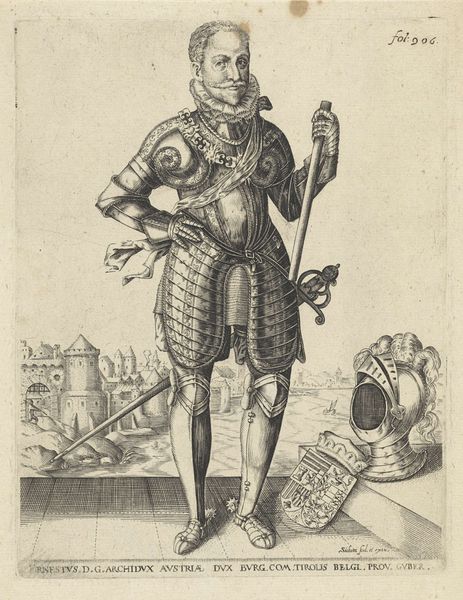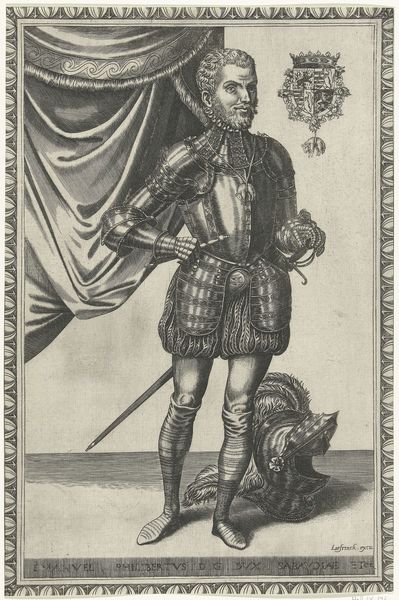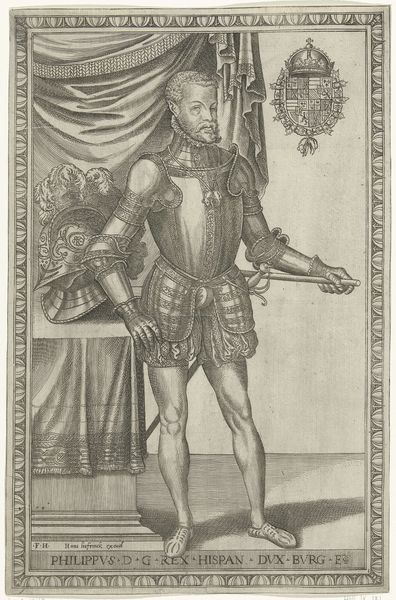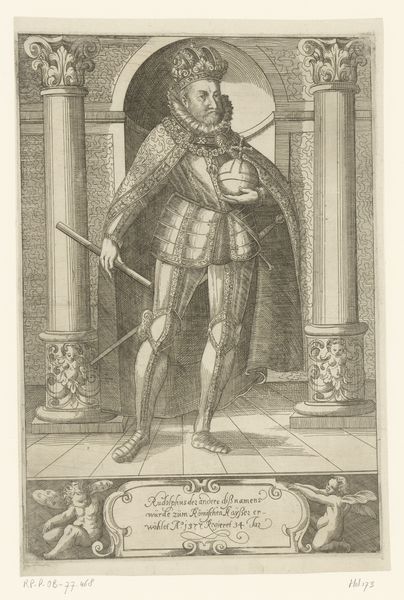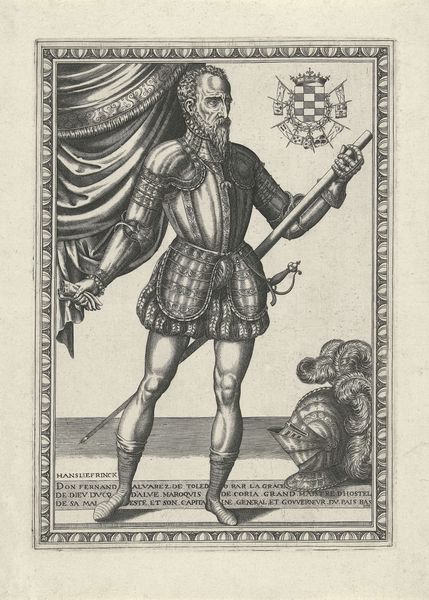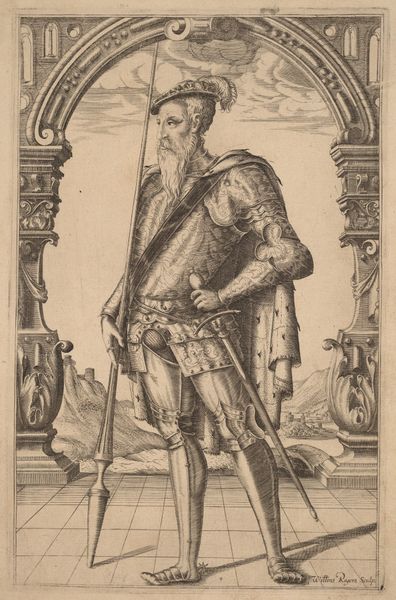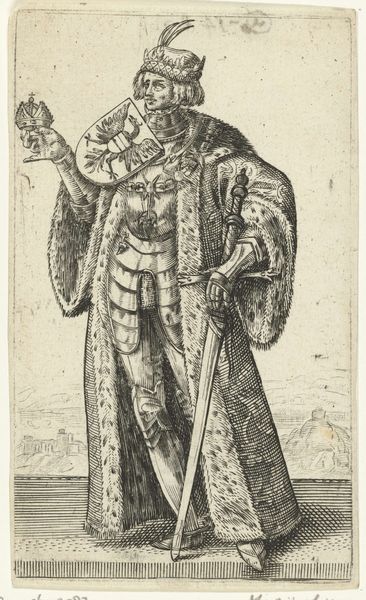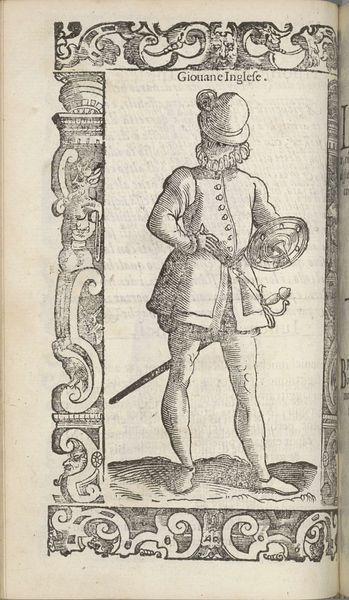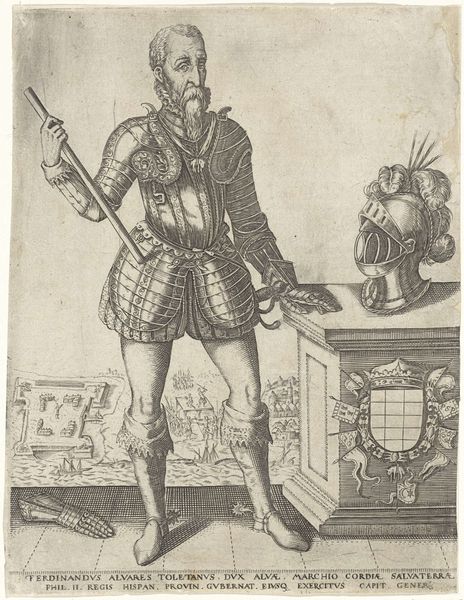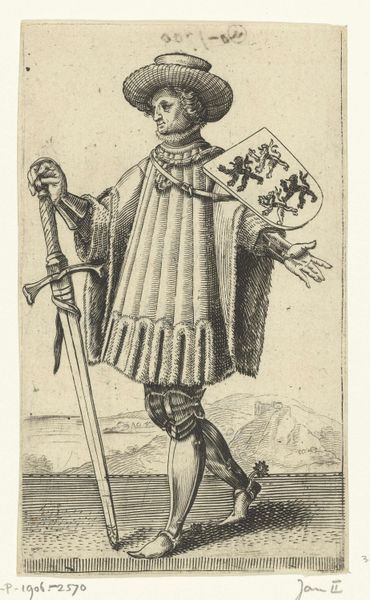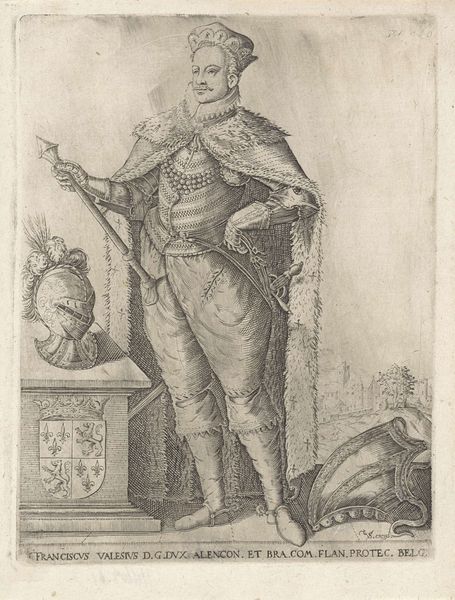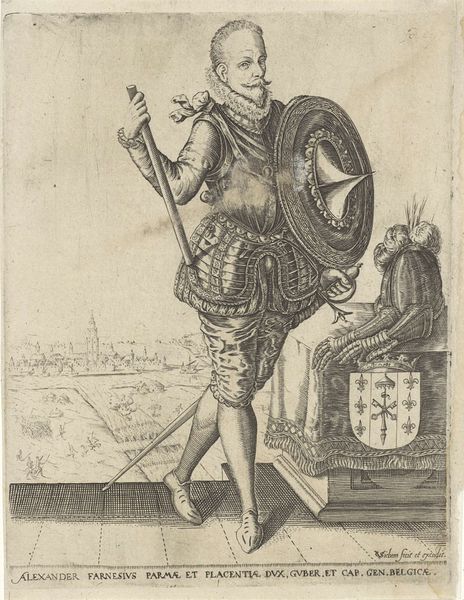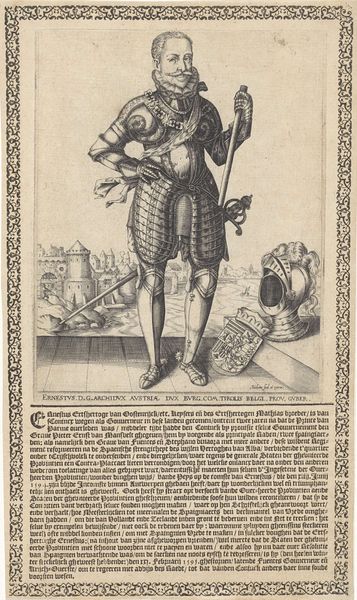
print, engraving
#
portrait
# print
#
old engraving style
#
mannerism
#
11_renaissance
#
academic-art
#
engraving
Dimensions: height 307 mm, width 201 mm
Copyright: Rijks Museum: Open Domain
Editor: This is a print titled "Portret van keizer Maximiliaan II" made by Frans Huys, sometime between 1546 and 1562. The engraving presents Emperor Maximilian II in full armor, positioned next to his helmet and family crest. What strikes me most is how he seems to stand apart, a singular figure framed by symbols of power. How do you interpret this work within its historical context? Curator: Absolutely. Considering this piece was created during the mid-16th century, we must view it through the lens of the Reformation and the ensuing religious conflicts. Portraits of rulers at the time were meticulously crafted tools of propaganda, designed to project an image of strength and stability. This portrait isn't just about Maximilian II; it’s about communicating power within a fractured empire. Notice how the artist renders his armor with incredible detail. What might the significance of portraying him in armor be during this era of intense political and religious upheaval? Editor: I imagine the armor symbolized his commitment to protect his empire. So, you are suggesting it is less about Maximilian as a man, and more about the ideals of leadership he represented? Curator: Precisely. Think about the role gender plays in solidifying power. Who was expected to yield this type of ‘protection’, and what were the cultural consequences for those unable to yield such displays of sovereignty? Editor: I suppose there’s an implicit contrast with the more traditionally feminine attributes such as beauty and demureness. Curator: Exactly. These state portraits often uphold hierarchical structures by presenting a highly masculine and unwavering image. What do you make of the gaze and posture? Is it welcoming or more commanding? Editor: It's certainly not warm, is it? More…assertive. I see now how the portrait serves as a calculated declaration of power during a tumultuous period. Curator: It’s also crucial to think about how the portrait's message has changed through time, and what its implications are for modern audiences. These seemingly straightforward depictions reveal intricate negotiations of identity and authority. Editor: This really changed my view of the portrait. I had not considered all the potential subtle narratives that might be beneath the surface.
Comments
No comments
Be the first to comment and join the conversation on the ultimate creative platform.
